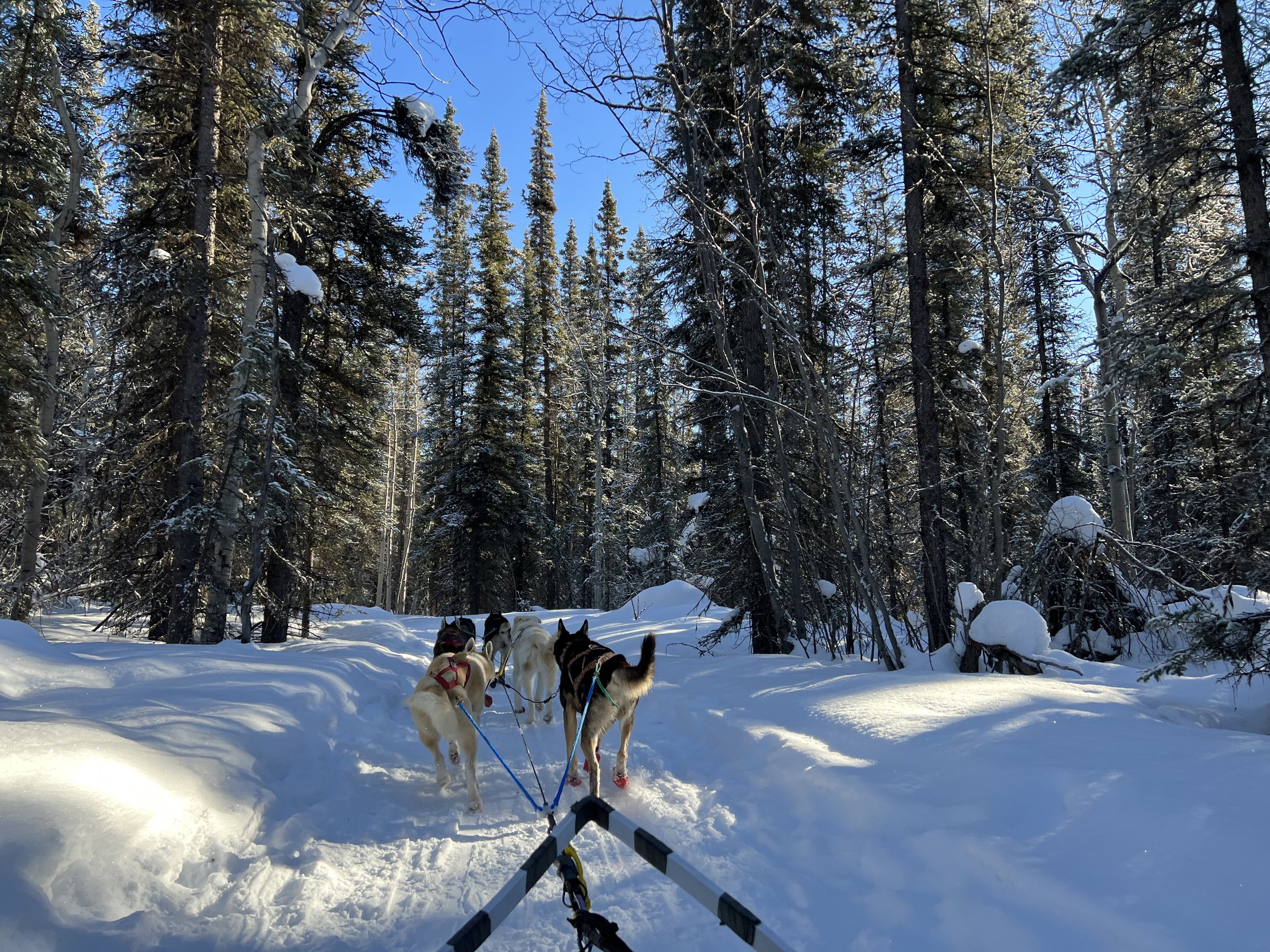The Currency is Connection
Swindon to the Yukon
The day finally came! On Tuesday the 15th February my partner Lucy and I left my family home just outside of Swindon, and got on a flight to Vancouver, Canada! Leaving for 6 months on an ETA (tourist visa), we’re planning to travel around the country, experiencing Canadian culture, spending time in the great outdoors, and learning about local communities. I’m planning to take inspiration for my design work from the outdoors, and reaffirm my purpose to work with brands and people that love protecting and championing the natural environment around us.
Our travels in our first week took us from London Gatwick to Vancouver via a connecting Calgary flight, and then onto Whitehorse in the Yukon. We were really excited to visit the Yukon, after being recommended it a few years ago by a friend. Throughout Vancouver airport there are a lot of brightly coloured billboards and posters advertising the Yukon - they really evoke adventure and beauty through the use of illustration and brand messaging. There was an interesting article in the in-flight magazine which talked about the importance of brand messaging for places. The Yukon has become a brand in of itself in recent years, with companies regularly using the name in front of their products or services to demonstrate durability, quality and endurance. The article focused on the creation of ‘the Yukon Story’ - capitalising on the uniqueness of the Yukon through the use of “Place Branding”; storytelling with a sales pitch. When explained fully, Place Branding is described as using story and narrative to move into a space where people express qualities, feelings and aspirations that are unique to the place being depicted. To create the Yukon Story, a company from Vancouver - Story Engine, interviewed more than 80 Yukoners about the qualities and feelings that define the territory. From there they completed a “character study” of the Yukon - bringing in First Nations, self government, adventure, opportunity and the outdoors, making statements like “Our currency in the Yukon is connection… We make mistakes and then vow to fix them, together.” The hope is that from creating a story for the area it will resonate with people who are looking for what the territory has to offer, and encourage them to stay.
During our stay in Whitehorse (the capital of the Yukon) the phrase mentioned in the story “Our currency in the Yukon is connection” really resonated with me. I noticed how interconnected the community was here. From bakeries and breweries supplying local restaurants to people working multiple jobs in different sectors it was cool to see how much support people have for each other. This was evident when we went to watch the start of the Yukon Quest, a 1000 mile international dog race. Due to the pandemic the race was a bit shorter this year, but still a huge part of the local culture. Race teams here are made up of people from all over the world, and there is a strong relationship between the mushers, dogs, and their support team. A few days later we spent a day at Alayuk to try dog sledding ourselves. The musher driving my sled explained that he worked part time at Alayuk and was also part of Michelle Phillips race team (she came second in this years Yukon Quest). It seems like it’s an incredibly important part of the culture here to support and take part in the race if you’re in the dog sledding industry.
This interconnected-ness is also reflected in how much people value the environment and resources around them - from using every part of an animal that’s been hunted to ensure no waste, to a repair-cafe being set up in the town to fix seemingly unrepairable items such as electronics. Seeing this community supporting and helping each other was inspiring, and all of these movements help the planet, the community and ensure the sustainable use of produce and materials.
Whilst in Whitehorse we hiked the Millenium Trail, a short route following the banks of the Yukon River, and visited the Yukon Wildlife Preserve - about 40 minutes North of the City. Whilst walking we saw an abundance of wildlife, from a red fox to 2 majestic bald eagles high in the trees. The Wildlife Preserve was something special. As soon as you leave Whitehorse the road gives way to complete wilderness, with a vast expanse of forests and mountains all covered in bright white snow. Moose outnumber people pretty much 2 to 1 in the Yukon, with an estimated 70,000 roaming across the territory. It was amazing to see some up close in the preserve alongside bison, mountain goats, caribou, and even an elusive lynx. It’s incredible to see these animals in their habitats, thriving in conditions that would seem unlivable in the UK.
Following our time in Whitehorse we travelled south to The Inn on the Lake, a beautiful property overlooking Marsh Lake and the mountains beyond. The Inn had an atmosphere that really made us feel at home, with the staff emanating good vibes, and the wooden cabin feeling very cosy and warm. We were lucky enough to see the Aurora Borealis on our first night, the sky erupting in a spectacular show of light greens and purples. We walked out onto the dark frozen lake and watched as they moved and rushed past overhead. The glowing, dancing spectacle is caused by collisions between electrically charged particles from the sun that collide with the earth’s atmosphere - although I think I prefer the spiritual theory; that they are a message from ancestors who have passed on. They dance in the spirit world to let us know they are happy there.















